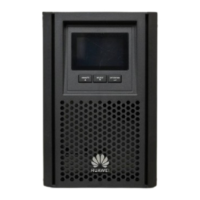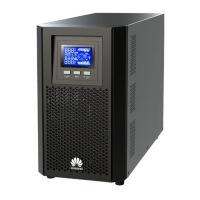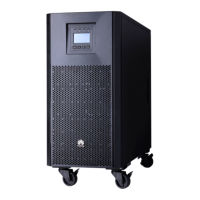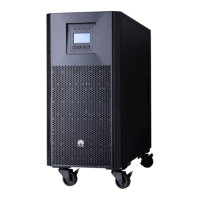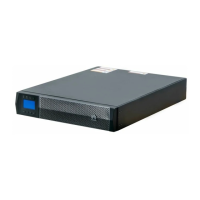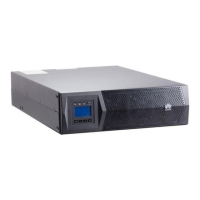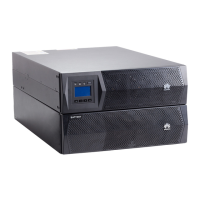Before installing and commissioning batteries, prepare re ghting facilities, such
as re sand and carbon dioxide re extinguishers, according to construction
standards and regulations. Before putting the battery room into operation, ensure
that it is equipped with a re extinguishing system that complies with local laws
and regulations, has been constructed and commissioned, and can work in
automatic or manual control mode.
Before unpacking, storage, and transportation, ensure that the packing cases are
intact and correctly placed according to the labels on the packing cases. Do not
place a battery upside down or vertically, lay it on one side, or tilt it. Stack the
batteries according to the stacking requirements on the packing cases. Ensure that
the batteries do not fall or get damaged. Otherwise, they will need to be scrapped.
After unpacking batteries, place them in the required direction. Do not place a
battery with its front panel facing upwards, put it upside down, tilt it, or stack it.
Ensure that the batteries do not fall or get damaged. Otherwise, they will need to
be scrapped.
Tighten the screws on copper bars or cables to the torque specied in this
document. Periodically conrm whether the screws are tightened, check for rust,
corrosion, or other foreign objects, and clean them up if any. Loose screw
connections will result in excessive voltage drops and batteries may catch re
when the current is high.
After batteries are discharged, charge them in time to avoid damage due to
overdischarge.
If the electrolyte leaks, absorb and neutralize the electrolyte immediately. Exercise
caution when moving or handling a lead-acid battery with electrolyte leakage to
avoid electrolyte hazards.
UPS2000-A-(1 kVA-3 kVA)
User Manual 1 Safety Information
Issue 17 (2024-01-30) Copyright © Huawei Digital Power Technologies Co., Ltd. 7

